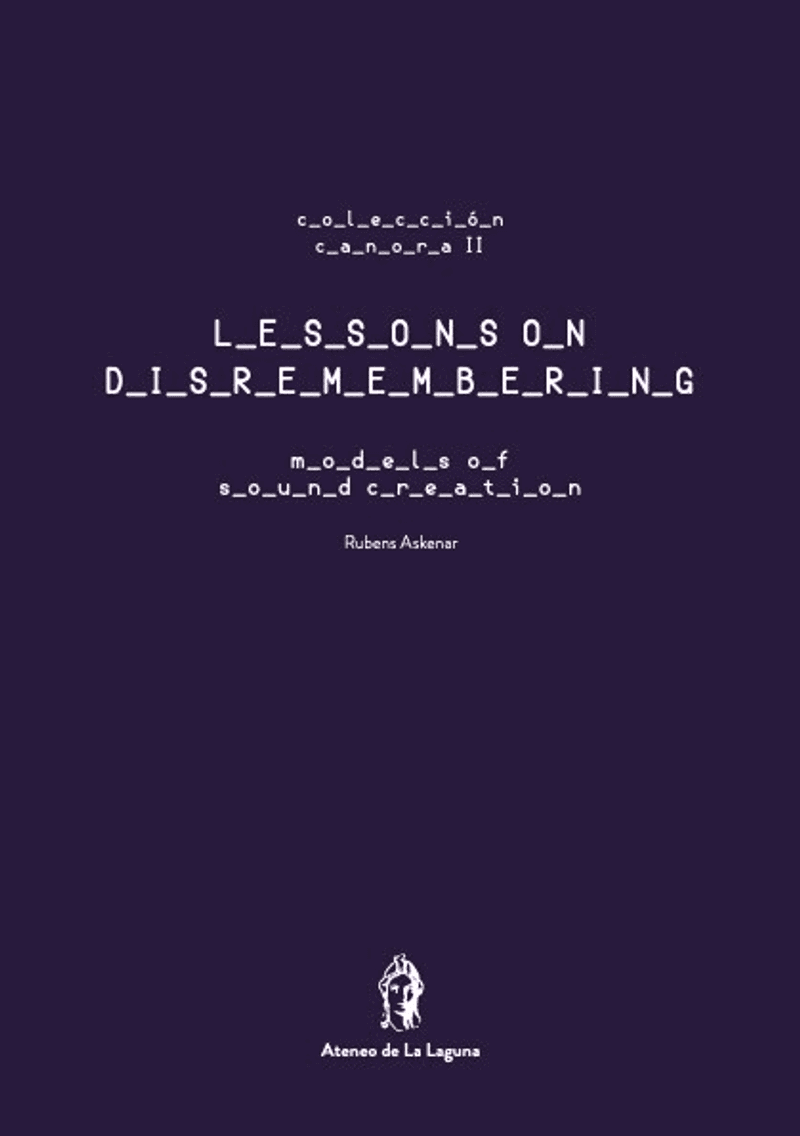Somatic Exploration and Instrumental Identity in orchestral contexts
This project examines how somatic exploration – a deep physical and sensory engagement with musical instruments – can forge a unique instrumental identity; in particular, to question whether the somatic information from hands-on instrumentation can transform approaches to creating orchestral music. A focal point of this research is Rubens Askenar’s Poem of Shadows, developed from studying percussion instruments with limited manoeuvrability.
Researcher: Rubens Askenar
Percussion instruments, designed with technical constraints, typically avoid complex grammatical potential in favour of referential and effect-driven sonic purposes. Among these instruments, the flexatone stands out, with sufficient timbral strength to serve as an appendage to other instruments. This sound source, with its recognisable function and apparent limitations, has become fertile ground for research and development in a series of three pieces by the composer: Bronze Clinics, Hyperficta and Poem of Shadows.
Akin to a bird without a nest, yearning for an instrument to elevate its operability, the flexatone seeks a host to enhance its restricted functions and merge its unusual acoustic qualities with others. Each composition in this project therefore disassembles and reconfigures the instrument, associating it with other vibrant bodies – the piano in Hyperficta or the Mark tree in Bronze Clinics – functioning as super-technical appendages. This process expands the sonic capabilities and syntactic development possibilities of the associated instruments. Such an approach also applies to other instruments, like sirens paired with timpani, forming the basis for gestural and harmonic construction in Poem of Shadows.
Commissioned by the Tenerife Symphony Orchestra, the first performance was given by Orquesta Sinfónica de Tenerife in collaboration with Ensemble Resilience and Paco Díaz as soloists, on 12 May 2023 in Auditorio de Tenerife, conducted by Fabián Panisello. Poem of Shadows integrates various catalytic elements that drive the generative processes, focusing on multiple layers of noise. These range from neutral harmonic regions to extreme vibration tensions, creating a meticulously orchestrated exploration mediated by precise artefacts that redefine instrument categories, such as air percussion.
The work aims for greater gestural plasticity in the noise palette by designing an instrument specifically dedicated to generating nuanced noises: the acoustic noise generator. This instrument, composed of a spring drum and a compact disc, produces a wide range of noises, from white noise to maximum distortion, within a rich environment of gestures and dynamic changes. The timpanist, using attachments like sirens and friction mallets, generates granular textures and spectra that activate harmonic resynthesis processes within the orchestral fabric.
Poem of Shadows does not begin with the precepts of saturation to maximise energy but approaches from harmonic relationships and typologies of noise. The piece explores resonant sonic elements, creating specific acoustic spaces and designing instruments that allow precise control over noise generation and manipulation. The main objective is to balance and harmonise unconventional materials, where noise and saturated textures gain significant harmonic dimensions.
The journey in Poem of Shadows starts with saturated sonic stages and shading strategies, aiming to refine resonances until achieving the desired radiance and translucency. Conventional orchestral hierarchies fade, giving equal prominence to each sound source as they traverse various harmonic states. The orchestra is structured into several acoustically significant vibrant bodies, including an A3 orchestral block and an ensemble of amplified solo instruments.
Resonances and resonators mobilise the space, influencing parameters like resonance speed and gestural mapping within the orchestral mass. The compositional process and interpretation demand virtuosic resonant nuances. This is mediated by a rich timbral alchemy, where sound transformation is grounded in elements like a pedal and a melody.
Poem of Shadows finds its genesis in the fragmented chant of Hildegard von Bingen’s Ave Generosa. The work begins as a humble gesture and unfolds into its full linear essence. The pedal note, a cornerstone of musical production, is conceived not as a fixed pitch but as a timbral region or forge created through selective instrumentation. This region supports elements ranging from harmonic simplicity to tonal breadth, incorporating wandering harmonics, pronounced gestures and structural chords.
At the beginning of the piece, resonant materials and the pedal region of the gong are highlighted. Two types of noise initiate the resonant flow: an extended emergent noise from the acoustic noise generator and an aggressive short noise from the solo timpani. These noises trigger a spatial rhythmic engine that oscillates between string clusters and a neutral pedal sustained by the gong. The acoustic noise generator, composed of a spring drum and a bowed CD, produces incredibly malleable noises, while the timpanist generates granular textures with various attachments.
The composition progresses through discernible sections, where joint interventions of noises disrupt established textures, acting as bulldozers or gates between instrumental densities. For example, at rehearsal mark D, the accumulated resonant texture contracts into agile gestures by the solo quartet, fading into the orchestral space. Distorted timpani gestures and the acoustic noise generator intertwine with fragments of Hildegard von Bingen’s chant, transforming vocal gestures into instrumental domains.
As the piece evolves, tensions manifest through emerging lines that densify resonance, culminating in a major tutti. The horizontal and vertical density of the texture increases, driven by agile attacks from the solo ensemble and percussion. Spectral timpani multiphonics unravel and reposition partials, supported by a repeated pulse in the strings. This spectral expansion, originating from timpani multiphonics, culminates as the noises subtract, leaving clean isolated partials floating in a resonant breeze from the gong.
The accumulation and spatial distribution of partials are harmonically re-contextualised, creating fragile tension alongside the gong’s harmonic ambiguity. These partials intermingle until they form harmonic transparencies, where Hildegard’s song emerges, gradually eroding with the other tones and residual frequencies.

OUTPUTS
Audio-score of the live performance
Ateneo de La Laguna commissioned a book detailing the compositional process and ideas behind Poem of Shadows, which was presented in October 2023:
Askenar, Rubens. Lessons on Disremembering: Models of Sound Creation. Colección Canora II. Ateneo de La Laguna, 2023.